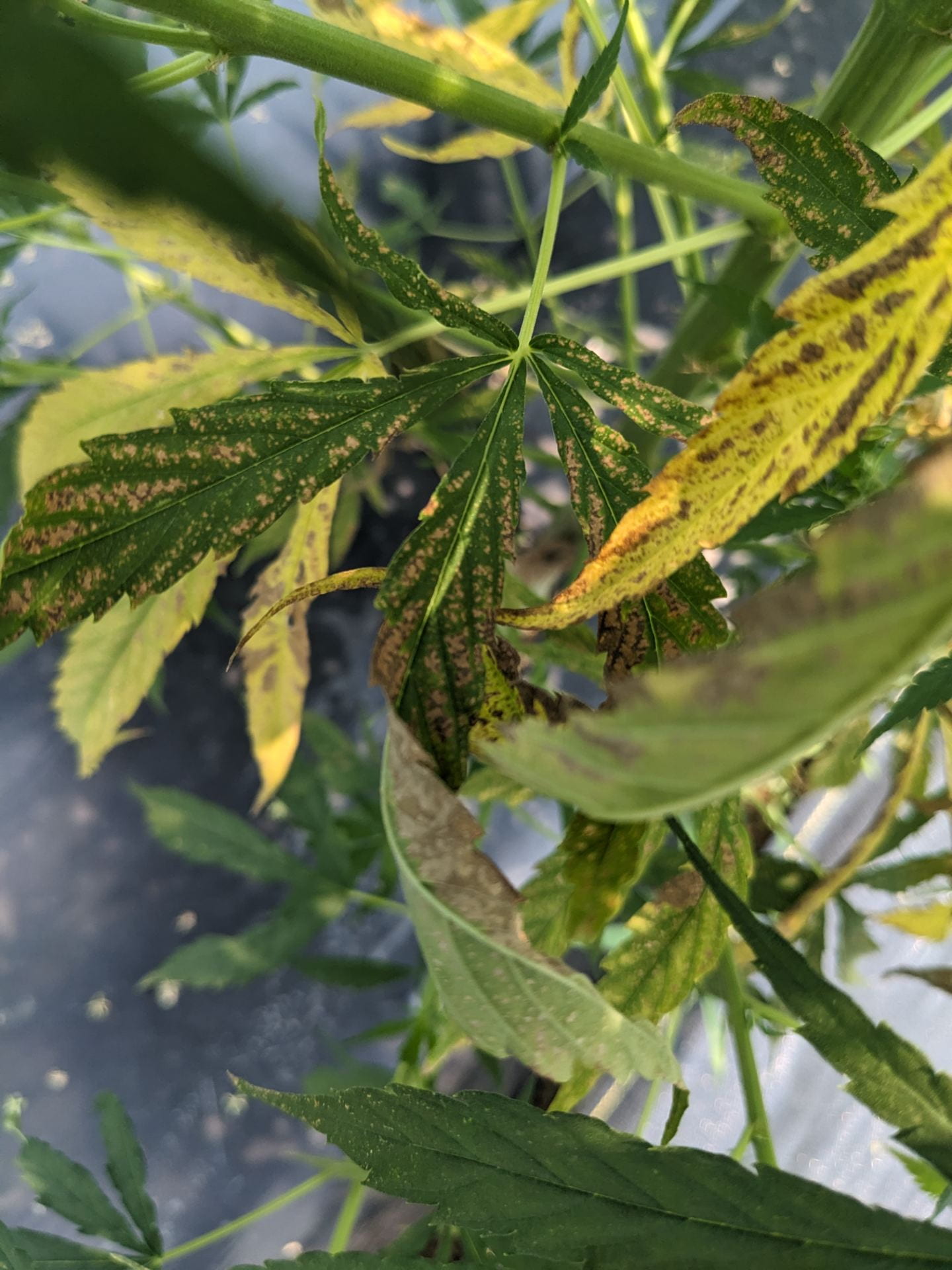Jocelyn Schwartz and Christine D. Smart
January 2024
Printer-friendly .pdf version of this factsheet.
Take home message:
Understanding and managing both abiotic and biotic issues is crucial for successful hemp cultivation. Regular monitoring, proper soil management, and timely intervention are key strategies for optimizing yields.

Definitions
- Plant biotic disease: A change in the structure or function of a plant caused by living organisms including fungi, bacteria, viruses, and nematodes. They can be transmitted by insects.
- Abiotic disorder: Caused by non-living things including nutrient deficiencies, weather, and water stress.
Abiotic disorders are caused by non-living factors
- Soil pH imbalance: Hemp thrives in a slightly acidic to neutral soil pH. A sub-optimal pH can cause leaf chlorosis and necrosis that can mimic nutrient deficiencies or disease.
- Water stress: Hemp requires well-drained soil but also consistent moisture levels for optimal growth. Wilting, leaf curling, and lodging are signs of water stress (Figure 1).
- Temperature extremes: Frost or heatwaves can negatively impact hemp’s physiological processes. Leaf curling and scorching are common symptoms associated with high heat.
- Nutrient deficiencies or excess: Imbalances in essential nutrients such as nitrogen, phosphorus, zinc and potassium can lead to nutrient deficiencies (Figure 3A). Chlorosis of entire leaves and discoloration along leaf veins are common.
- Wind and physical damage: Strong winds can physically damage hemp plants, leading to breakage or uprooting. Leaves may have holes and stems could snap.




Abiotic Cues
- Distribution: There is often a pattern of injury in the field for abiotic issues. Symptoms caused by a pathogen (biotic disorder) tend to have an irregular distribution. Regular scouting and recordkeeping are important.
- Age: Abiotic issues will typically affect one age of plant tissue. New growth on the plant should appear normal, assuming that the abiotic factor is corrected.
- Timing: Abiotic issues arise quickly, while biotic issues build up gradually. Monitor environmental conditions, such as temperature, humidity, and sunlight.
- Other crops: Nearby crops will have the same symptoms as the affected hemp. Biotic diseases are typically hemp-specific.
Biotic Cues
- Insect-damage will manifest as eggs, webbing, cast skins, frass, and the presence of the pest itself.
- There is often a “sign” of the pathogen, including spores, mycelium, and overwintering structures.
- Check for pathogen signs when an issue is observed. It is important to look at all plant parts (flowers, leaves, stems and roots).
- Viruses can manifest as leaf curling, spotting, and stunted growth.
More information
Contact
- Jocelyn Schwartz jas975@cornell.edu
- Christine D. Smart cds14@cornell.edu